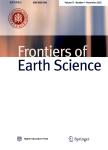Source analysis of spaceborne microwave radiometer interference over land
Source analysis of spaceborne microwave radiometer interference over land作者机构:Collaborative Innovation Center on Forecast and Evaluation of Meteorological Disasters Key Laboratory for Aerosol-Cloud-Precipitation of China Meteorological Administration Nanjing University of Information Science & Technology Nanjing 210044 China
出 版 物:《Frontiers of Earth Science》 (地球科学前沿(英文版))
年 卷 期:2016年第10卷第1期
页 面:135-144页
核心收录:
学科分类:0808[工学-电气工程] 080802[工学-电力系统及其自动化] 08[工学] 0708[理学-地球物理学] 082503[工学-航空宇航制造工程] 0825[工学-航空宇航科学与技术] 0704[理学-天文学]
主 题:AMSR-E RFI geostationary TV satellite
摘 要:Satellite microwave thermal emissions mixed with signals from active sensors are referred to as radio- frequency interference (RFI). Based on Advanced Micro- wave Scanning Radiometer-Earth Observing System (AMSR-E) observations from June 1 to 16, 2011, RFI over Europe was identified and analyzed using the modified principal component analysis algorithm in this paper. The X band AMSR-E measurements in England and Italy are mostly affected by the stable, persistent, active microwave transmitters on the surface, while the RFI source of other European countries is the interference of the reflected geostationary TV satellite downlink signals to the measurements of spacebome microwave radiometers. The locations and intensities of the RFI induced by the geostationary TV and communication satellites changed with time within the observed period. The observations of spacebome microwave radiometers in ascending portions of orbits are usually interfered with over European land, while no RFI was detected in descending passes. The RFI locations and intensities from the reflection of downlink radiation are highly dependent upon the relative geometry between the geostationary satellite and the measuring passive sensor. Only these fields of view of a spaceborne instrument whose scan azimuths are close to the azimuth relative to the geostationary satellite are likely to be affected by RFI.



